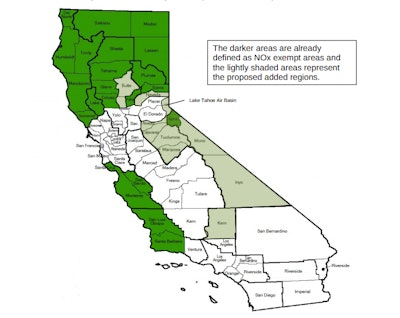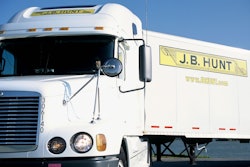
As the California Air Resources Board’s Statewide Truck and Bus Rule mandated phase-out of pre-2007 emissions-spec engines several years back, the Proposition 1B grant program offered some in-state truckers a deal — agree to turn in your soon-to-be-noncompliant rig to a CARB-approved dismantler and receive grants to purchase another in compliance with the state’s laws.
A small fleet heavy-haul owner-operator with three trucks in the Central Valley didn’t want to do it — the 1996-model Kenworth the owner entered in the program to upgrade to a truck allowable under CARB rules had nothing wrong with it. “I think this whole CARB thing is a bad deal,” says the owner, who declined to be quoted with attribution. The company’s current “best truck,” as he describes it, is also set to “become scrap” in his home state in a year or two unless he repowers it with a 2010-emissions-spec engine.
He didn’t want to scrap the 1996 KW, but he did — in exchange for $50K to put toward a replacement truck in his case. “That up front sounds reasonable if you’re in the position” of being essentially forced to do it, he says, and without a local market to sell the unit. This particular KW was equipped with a “big front end and a wet kit to also pull an end dump for us. It was something that I wouldn’t have gotten rid of – I’d still be using it today.” And he later identified an issue with the grant program, when “at the end of the following year you get a tax bill for tax on that $50,000. I didn’t see that in the contracts – you end up with about $30,000 for a truck that’s otherwise probably worth $70,000 equipped as it was. It feels dirty to me, all of it.”
To a lot of others, too, but he turned the KW into LKQ in Stockton, Calif., to have done what his air quality district, that of the San Joaquin Valley, and CARB, required of dismantlers under the Prop 1B: Goods Movement Emission Reduction grant program. Namely, from the dismantler requirements posted at ValleyAir.org, LKQ was required to:
- …. destroy the old engine within 60 calendar days of receipt. The engine destruction must be done in accordance with these
Guidelines. - The engine block shall be punctured and destroyed in such a manner to eliminate the possibility of future operation and use of any components.
Johnny Farah of LKQ in Stockton describes this process as essentially putting “a big old hole” in the engine. Also, given the truck’s owner was doing a replacement in this case rather than just a repower of the truck, LKQ was required to:
- Sever the old vehicle frame rails to ensure that the vehicle is rendered useless and to prevent repeated use.
Much of the remainder of the requirements are centered around documentation, including pictures of the finished work, that San Joaquin Valley Air District reps currently have on file, according to the rep I sat on the phone with last week as he pulled them up and confirmed they existed for this case.
You can imagine the truck owner’s surprise, however, when after a certain amount of time he noticed position reports from an old GPS unit that had remained with the truck when he turned it in to the dismantler. The GPS unit, which he says had been hardwired in a position behind the dash and more or less forgotten given it was out of date with a tracking system he was then implementing, was tracking the truck now in Jalisco, Mexico. Position reports from Mexico continued to be sent his way until last year, after which either his prior service term ran out or someone found the unit and disabled it. He’s not sure.
Farah at LKQ says it’s not uncommon for the company’s export-sales arm to — after doing their work for CARB and making the appropriate documentation (which in the case of the San Jaoquin district most often included an in-person visit from district staff to do the documentation themselves) — export a entire disabled unit as-is.
“What happens when it comes to us,” Farah says, is “we can sell everything for parts and body parts. When we dismantle them, we can sell the cab, sell the hoods, the whole nine yards…. We can sell the whole thing with the motor in it, as parts,” as long the motor has that “big old hole” in it.
The state does not pay the dismantlers for participating in the program, so this is LKQ’s incentive to be part of it. “It’a legitimate program where people can’t screw around with it,” Farah believes, when it comes to the air quality district’s inspectors and the required documentation, particularly for those who work through the San Joaquin Valley air district, given their on-site inspections.
It’s impossible to say what engine ended up in the KW, ultimately, in Mexico, though like as not it wasn’t a 2010-EPA-emissions-spec one. As one watcher noted to me just the other day: “They’re as good as we are down there at putting stuff back together.”
For the truck’s former owner, the truck-emissions whack-a-mole in his case just “seems like a failure in our state’s embarrassing effort to ensure clean air.”










